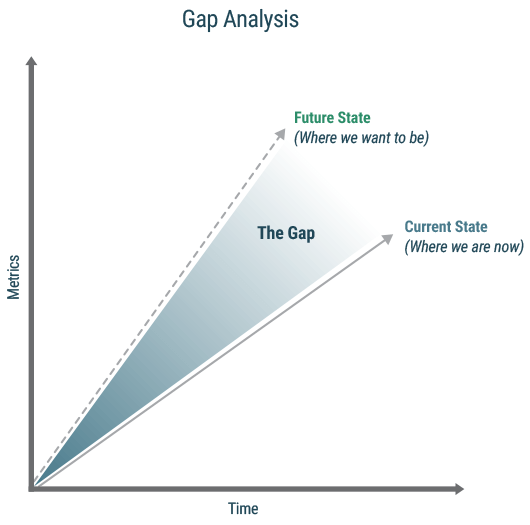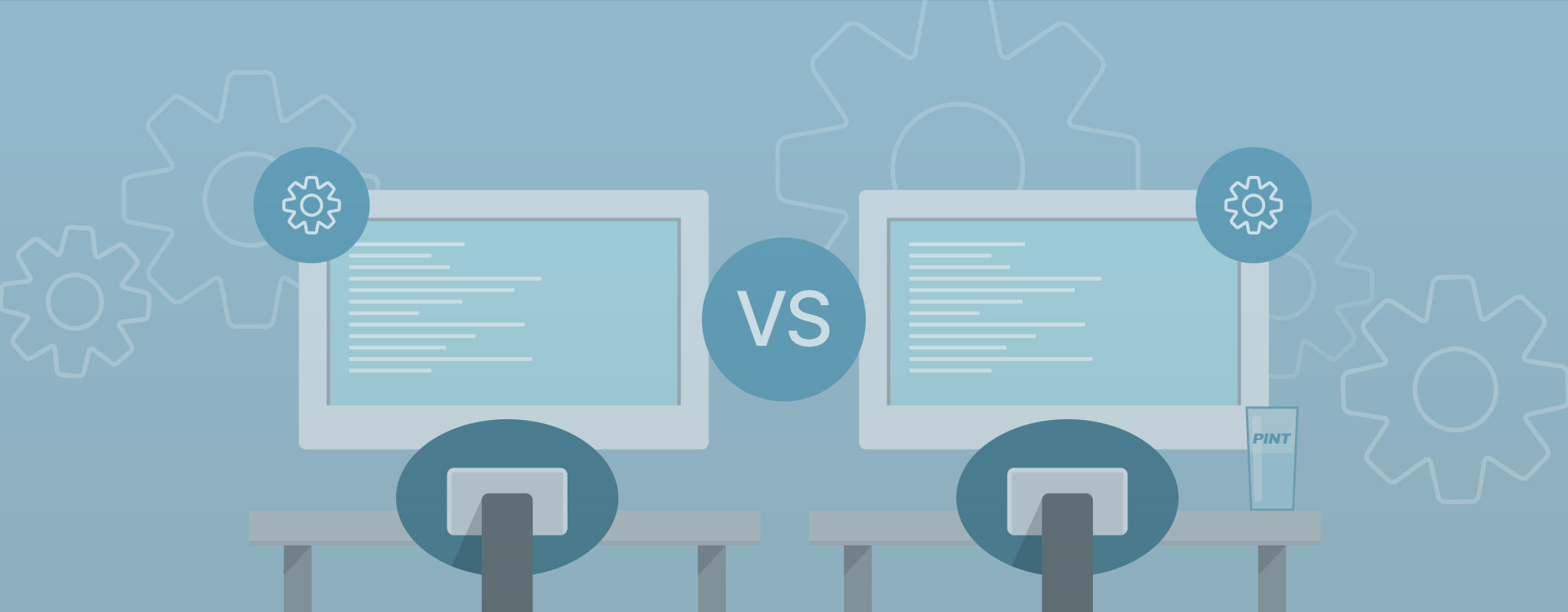Blog

How to Actually Execute on Your Digital Product Strategy: Use Gap Analysis
Why do we need gap analysis?
Performing a gap analysis is increasingly important as barriers to entry in more marketplaces are decreasing and rivalry among firms is increasing. Your firm may have observed trends and opportunities in the marketplace, but executing on opportunities correctly can be difficult.
In fact, the gap between strategy and execution is an enduring problem that companies are finding hard to solve.
Our observations are that oftentimes companies lay out a grand vision for an opportunity in the marketplace, but they don’t spend enough time assessing what their existing capabilities are and what the required capabilities are to execute.
Strategy can be very powerful when executed upon, which is why there shouldn’t be a separation between strategy and execution. When formalizing a given strategy for an opportunity in the marketplace, a gap analysis can help teams consider all relevant variables to the strategy before the strategy is sliced, diced, and divided up into all of the relevant departments or business units for execution.
Having a big picture of how your company is going to move from point A to point B is imperative for the success of any given strategy.
What is gap analysis?
There are numerous ways in which the execution of a given strategy can occur, however, without proper research and investigation into the current and future state of the initiative, false assumptions may be made.
A gap analysis is a comparison between the ‘current state’ and the ‘future state’ of the area of business at stake. In addition, it is also an assessment of your company’s current capabilities and the capabilities required to execute.
Once the gap is understood, the steps required to bridge the gap can be determined.
How do I perform a gap analysis?
In a world where resources are finite and competitively sought after, gap analysis plays a critical role in increasing efficiency. In order to be more efficient, the first step is to identify your team’s current state and desired future state.
Step #1 – Identify Current and Future State
In the example below, the organization wants to increase revenue from $200,000 per employee to $250,000 (25% growth rate). However, the current growth rate average year-over-year is only 5%.
| Current State | Future State |
|---|---|
| • Revenue of $200,000 per employee – $100 million total • 5% year-over-year growth rate |
• Revenue of $250,000 per employee – $125 million total • 25% growth rate |
Step #2 – Identify the Gaps and Why They Exist
The shaded area in the chart below demonstrates the difference between where you are now, and where you’d like to be after implementation.
Sticking with the same example as before, if the current growth rate is 5% or $5 million on average per year, then the gap is essentially $20 million ($125 million subtracting $105 million).

Why do these gaps exist?
Why is revenue per employee what it is today? What is preventing the company from bringing in more customers. Is it your product? Is it your support? Is it your prices?
It is important to be thorough with asking “why” questions so that you may get to the root cause of why the gap exists.
In the example below, we get to five levels deep of “why questions:
- Why are trials not converting into paying customers?
Because they don’t spend time getting to know our product. - Why don’t customers spend the time to get to know the product?
Because they don’t know where to begin. - Why don’t customers know where to begin?
Because our product is complex and there are are a variety of features that aren’t directly accessible from the main screen. We did this on purpose not to overwhelm end users with too many options. - Why haven’t we focused on easing the onboarding process?
Because our product development team and marketing hasn’t prioritized these efforts. - Why haven’t we prioritized these efforts?
Because we are too busy adding new features.
Step #3 – Hypothesize Improvements to Close the Gap
Closing the gaps may not be trivial, but identifying the gaps and creating a plan to close the gaps is imperative if a new strategy or initiative is going to be successful. In order to do so, identify all significant assumptions and hypotheses to test and monitor.
It is important to note that it is very easy to glaze over the impact that might occur if some of the assumptions turn out to be false. This can happen when the team has become attached to the potential behind a given strategy and vision and they feel pressured to move forward swiftly. However, the cost of overlooking your assumptions can be quite hefty. With all of the wasted time and resources, the cost can range from thousands to billions ($449 billion of GE shareholder value lost).
| Hypotheses | Actions Required |
|---|---|
| 1. In-app messaging will increase conversions for trials to customers by 10%. |
1. Interview churned customers and existing customers. 2. Map out customer journey. (Resources: See this blog post, this example, and/or this article) 3. Create messaging for all relevant pain points. 4. A|B test the messages for a period of time (comparison to no messages). 5. Identify end dates to have the gap resolved. |
| 2. There is a large opportunity to upsell existing customers that will result in a 5% growth rate. |
1. Lay out all assumptions. 2. Interview churned customers and existing customers. 3. Map out customer journey. 4. Create messaging for all relevant opportunities and channels., 5. A|B test the messages for a period of time (comparison to no messages). 6. Identify end dates to have the gap resolved. |
| 3. Providing a better onboarding experience to trial users will increase conversions to customers by 10%. |
1. Interview churned customers and existing customers. 2. Map out customer journey. (Resources: See this blog post, this example, and/or this article) 3. Create a service blueprint and identify pain points and opportunities. 4. Develop a plan to bridge the gap and test. 5. Identify end dates to have the gap resolved. |
How to Approach it?
In order to hit your ‘Future State’ goal the first time (and avoid costly re-work), you need to make sure you thoroughly analyze the ‘what’ and the ‘how’ portion of the initiative. When starting the initiative, your team should also know the ‘why?’ behind the initiative.
By creating a vision and sharing that vision with your team, it is more likely that you’ll be made aware of any risks and gaps that exist. It is important not to be too optimistic or opposed to criticism from team members, because it may undermine your team’s ability to think critically.
In the long-run, continuous monitoring and testing of strategic decisions will help your team pivot when necessary and continuously improve. For technology firms in particular, development resources are extremely scarce. By leveraging upfront research, validation, and refinement, your organization can utilize scarce resources far more efficiently.
Related Articles

Accessibility on the Modern Web
There’s been a lot of buzz in the news lately about accessibility, specifically in reference to the dozens of ADA lawsuits that seem to be more and more...

Automated Visual Regression Testing
What is automated visual regression testing? The name sounds scary, but in reality, the idea is fairly simple. If you have a user interface (UI),...

Automated Testing Tool Comparisons
Automated testing is rapidly gaining popularity across the web development field, and as expected, the number of automated testing tools is growing rapidly as well....